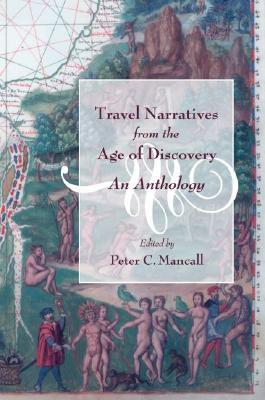 |
| Picture from: https://www.goodreads.com/book/show/1501593.Travel_Narratives_from_the_Age_of_Discovery |
For
my American History to 1865 course at Metro I actually had to do a book review
of Travel Narratives from the Age of
Discovery: An Anthology by Peter C. Mancall. I’ll give this book 3 stars
out of 5 or a C rating. This book could be helpful for people looking from
primary source material on related topics. It is just not a book that you would
read for the fun of it. Below is my detailed analysis.
Peter
C. Mancall collected many firsthand accounts from explorers to create his book Travel Narratives from the Age of Discovery:
An Anthology. From his introduction to the pieces it seems that he
collected them into one source to show how the explorers’ experiences and mind
set was shaped by the cultures they were coming from. The book is broken down
into four main sections based on where the observer was writing about: Africa,
Asia, America, and Europe. Mancall gave a short introduction to each piece
which included information about the person who wrote it. This was done to help
build a base to understand why the writer wrote what they did and to explain
their perspective a bit.
Mancall
never directly makes his thesis known, but through the introduction he focuses
on the relationship between observer and observed while stressing what biases
can arise in these first person accounts. From Mancall part of the book no bias
can be found and he directly addresses the biases that people can run into when
looking at documents from this time period.
One such example of this is when he talks about how gender can influence
peoples’ perspectives and that finding documents from women during this period
is really hard (Mancall, 11). He also tries to dispel biases that readers may
have when he states, “the texts that survive should not be dismissed as
revealing more about the observer than the observed” (Mancall, 13).
It
cannot be judged if his work is reliable or not since it was mostly a
collection of other peoples’ work (primary sources). The best way to look at this
is by going back to two main points (arguments?) he made in his introduction.
The first point is that the explorers had three main goals: to spread
Christianity, assess the peoples they met while establishing how savage they
were when compared to Europeans, and to make a profit from their travels
(Mancall, 22). The other main point was that explorers “often wrote with
contempt” about the native peoples of the Americas (Mancall, 33). One example
of this was the Columbus letter that said, “They explored for three days, and
found countless small communities and people, without number, but with no kind
of government, so they returned” (Mancall, 209). This supported the natives as
being a lawless bunch that needed European help to make them civilized. All the
works picked for this anthology supports these ideas. It could have just been
“cherry picking” that helped the works fit into Mancall’s themes or it could
just be a good representation of the works coming from this time period. If it
was the latter then it would have these two concepts fitting in with his thesis
of how things could be deeper than just what one would get from a surface read
of the material.
These
arguments/thesis are convincing when compared to other books, such as the book
from class. The goals of the explorers that he pointed out show up all the time
in media (books and films) from this time period and is supported by what is
taught in schools. The second argument
about contempt a bit less so from past experience, because most other classes
I have taken showed that it depended more on what part of Europe the explorer
came from that would influence their perspective of different peoples. The
blanket statement about observers in America goes against his concepts of what
all influences biases.
Bibliography
Henretta,
James A., et al. America: A Concise
History-Volume 1: To 1877. Boston: Bedford/ St, Martin’s,
2015.
Mancall,
Peter C., ed. Travel Narratives from the
Age of Discovery: An Anthology. 1st ed. New York: Oxford
University Press, 2006.
No comments:
Post a Comment